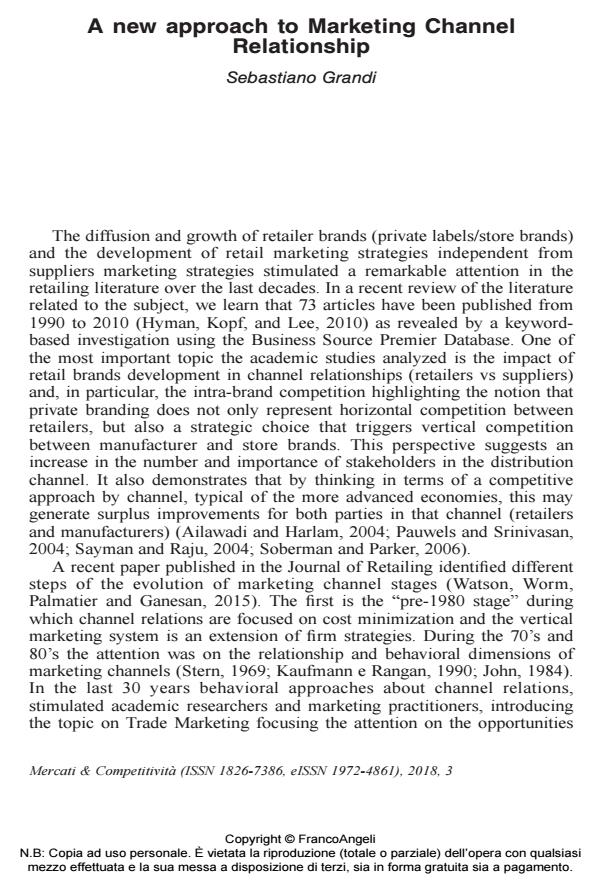A new approach to Marketing Channel Relationship
Journal title MERCATI & COMPETITIVITÀ
Author/s Sebastiano Grandi
Publishing Year 2018 Issue 2018/3
Language Italian Pages 4 P. 7-10 File size 54 KB
DOI 10.3280/MC2018-003001
DOI is like a bar code for intellectual property: to have more infomation
click here

FrancoAngeli is member of Publishers International Linking Association, Inc (PILA), a not-for-profit association which run the CrossRef service enabling links to and from online scholarly content.
Sebastiano Grandi, A new approach to Marketing Channel Relationship in "MERCATI & COMPETITIVITÀ" 3/2018, pp 7-10, DOI: 10.3280/MC2018-003001